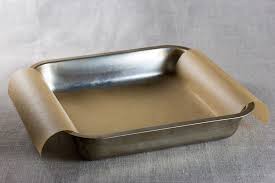Your Cart is Empty
FREE Worldwide Shipping! | +1 365 654 6605
FREE Worldwide Shipping! | +1 365 654 6605
March 23, 2024 5 min read

When it comes to baking, having the right equipment is essential for achieving the best results. Two commonly used items in the kitchen are baking sheets and sheet pans. While they may seem similar, there are distinct differences between the two that can affect your baking outcomes. In this article, we will explore the characteristics, uses, and benefits of both baking sheets and sheet pans, helping you understand which one is best suited for your needs.
A baking sheet, also known as a cookie sheet, is a flat, rectangular metal tray with a slight lip on one or two sides. It is typically made of aluminum, although there are variations available in other materials such as stainless steel. Baking sheets are designed for baking cookies, biscuits, and other baked goods that require even heat distribution and a flat surface. Baking sheets are incredibly versatile and can be used for a wide range of baking tasks. Here are some common uses for baking sheets: A sheet pan, also known as a baking sheet pan or baking tray, is a flat, rectangular metal pan with raised edges or rims on all four sides. It is commonly used in professional kitchens and food service operations but is also popular among home bakers who require a larger baking surface. Sheet pans are widely used in both professional and home kitchens for a variety of cooking and baking tasks. Here are some common uses for sheet pans: Now that we have explored the characteristics, uses, and benefits of both baking sheets and sheet pans, let's summarize the key differences between the two: In summary, baking sheets are the go-to choice for baking cookies and other baked goods, while sheet pans are versatile tools used for cooking, roasting, and baking on a larger scale. Depending on your specific baking or cooking needs, you can choose the appropriate tool to achieve the best results. Remember, having the right equipment is just one part of successful baking. It's also important to use quality ingredients, follow recipes accurately, and practice proper baking techniques. With these elements combined, you'll be well on your way to creating delicious baked goods and culinary masterpieces. Happy baking!What is a Baking Sheet?
Characteristics of Baking Sheets
Uses of Baking Sheets
Benefits of Baking Sheets
What is a Sheet Pan?
Characteristics of Sheet Pans
Uses of Sheet Pans
Benefits of Sheet Pans
Understanding the Differences
References
Be the first to know about upcoming sales and promos. Get a 10% discount coupon when you subscribe!